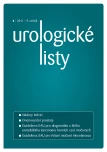NEPHRON SPARING SURGERY WITHOUT RENAL HILAR CLAMPING
Authors:
E. R. Taylor; A. D. Benson; B. F. Schwartz
Published in:
Urol List 2011; 9(4): 12-15
Overview
Introduction:
With the increased use of radiographic imaging, detection of incidental renal lesions has climbed. Most of these lesions are small, < 7 cm, sized lesions. During robotic or laparoscopic nephron sparing surgery renal hilar clamping is often employed. Unfortunately, there is no simple technique to cool renal parenchyma during laparoscopic nephron sparing surgery and studies have shown that longer warm ischemia times are associated with long-term renal damage.
Purpose:
To analyze operative outcomes of patients undergoing laparoscopic and robotic partial nephrectomies without the use of hilar clamping.
Methods:
A retrospective database of patients undergoing partial nephrectomy from 2003 to 2010 was reviewed. Small incidentally discovered renal masses suspicious for malignancy were excised by either conventional laparoscopic partial nephrectomy (LPN) or robotic-assisted laparoscopic partial nephrectomy (RALPN) without renal vessel clamping. Data from these clinical interactions was retrospectively collected and analyzed, which included patient age, pathologic diagnosis, operative time, surgical margins, pre - and post-operative serum creatinine, blood loss, post-operative hemoglobin change, transfusion rate, length of hospital stay, length of follow up, recurrences, and complications.
Results:
Twenty-nine patients underwent partial nephrectomy without renal hilar clamping at our institution. Fifteen were performed by LPN while 14 underwent RALPN. No intra-operative complications occurred and 6 (20%) post-operative complications occurred without the need for reoperation. The average pre - and post-operative serum creatinine levels were 1.2 and 1.1. The average post-operative hemoglobin change was -2.7 (g/dL), with 3 (10.3%) patients requiring a blood transfusion. Of the masses, 72.4% were malignant and the mean renal mass size was 2.2 cm. One positive surgical margin occurred, but at a median follow up of 34 months there have been no recurrences.
Conclusions:
Laparoscopic partial nephrectomy with or without robotic assistance can be safely performed without hilar clamping in select patients providing renal functional protection.
Key words:
renal malss, robotic surgery, partial nephrectomy
Sources
1. Huang WC, Levey AS, Serio AM et al. Chronic kidney disease after nephrectomy in patients with renal cortical tumors: A retrospective cohort study. Lancet Oncol 2006; 7(9):735–740.
2. Lee CT, Katz J, Shi W et al. Surgical management of renal tumors 4 cm or less in a contemporary cohort. J Urol 2000; 163(3): 730–736.
3. Miller DC, Hollingsworth JM, Hafez, KS et al. Partial nephrectomy for small renal masses: An emerging quality of care concern? J Urol 2006; 175 (3 Pt 1): 853–857.
4. Lesage K, Joniau S, Fransis K et al. Comparison between open partial and radical nephrectomy for renal tumours: perioperative outcome and health-related quality of life. Euro Urol 2007; 51(3): 614–620.
5. La Rochelle J, Shuch B, Riggs S et al. Functional and oncological outcomes of partial nephrectomy of solitary kidneys. J Urol 2009; 181(5): 2037–2042.
6. Lane BR, Banineau DC, Poggio ED et al. Factors predicting renal functional outcome after partial nephrectomy. J Urol 2008; 180(6): 2363–2368.
7. Gill IS, Kavoussi LR, Lane BR et al. Comparison of 1800 laparoscopic and open partial nephrectomies for single renal tumors. J Urol 2007; 178(1): 41–46.
8. Thompson RH, Leibovich BC, Lohse CM et al. Complications of contemporary open nephron sparing surgery: a single institution experience. J Urol 2005; 174(3): 855–858.
9. Thompson RH, Frank I, Lohse CM et al. The impact of ischemia time during open nephron sparing surgery on solitary kidneys: a multi-institutional study. J Urol 2007; 177(2): 471–476.
10. Marszalek M, Meixl H, Polajnar M et al. Laparoscopic and open partial nephrectomy: a matched-pair comparison of 200 patients. Euro Urol 2009; 55(5): 1171–1178.
11. Bensalah K, Pantuck AJ, Rioux-Leclercq N et al. Positive Surgical margin appears to have negligible impact on survival of Renal Cell carcinomas treated by nephron-sparing surgery. Euro Urol 2010; 57(3): 466–471.
12. Novick AC. Renal hypothermia: in vivo and ex vivo. Urologic Clinics of North America 1983; 10(4): 637–644.
13. Thompson RH, Lane BR, Lohse CM et al. Every Minute Counts When the Renal Hilum Is Clamped During Partial Nephrectomy. Euro Urol 2010; 58(3): 340–345.
14. Desai MM, Gill IS, Ramani AP et al. The impact of warm ischemia on renal function after laparoscopic partial nephrectomy. British Journal Urology 2005; 95(3): 377–383.
15. Bhayani S, Rha K, Pinto P et al. Laparoscopic partial nephrectomy. Effect of warm ischemia on serum creatinine. J Urol 2004; 172 (4 Pt 1): 1264–1266.
16. Van Poppel H. Efficacy and safety of nephron-sparing surgery. International Journal of Urology 2010; 17(4): 314–326.
17. Bollens R, Rosenblatt A, Espinoza BP et al. Laparoscopic partial nephrectomy with on-demand clamping reduces warm ischemia time. Euro Urol 2007; 52(3): 804–809.
18. Delong JM, Shapiro O, Moinzadeh A et al. Comparison of laparoscopic versus robotic assisted partial nephrectomy: one surgeon’s initial experience. Canadian Journal Urology 2010; 17(3): 5207–5212.
19. White WM, Goel RK, Haber GP et al. Robotic partial nephrectomy without hilar occlusion. British Journal Urology 2009; 105(11): 1580–1584.
20. Turna B, Frota R, Kamoi K et al. Risk factor analysis of postoperative complications in laparoscopic partial nephrectomy. J Urol 2008; 179(4): 1289–1295.
Labels
Paediatric urologist UrologyArticle was published in
Urological Journal

2011 Issue 4
Most read in this issue
- PROSTATE CANCER PREDICTION BASED ON PCA3 EVALUATION
- RENAL CANCER EARLY DETECTION, THE ROLE OF TUMOUR MARKERS IN FURTHER DIAGNOSTIC, THERAPEUTIC AND PROGNOSTIC STRATEGY
- SURGICAL MANAGEMENT OF THE RENAL CANCER WITH THE TUMOR THROMBUS IN THE VENOUS SYSTEM T3B AND T3C
- LAPAROSCOPIC AND ROBOTIC HEMINEPHRECTOMY AND URETEROURETEROSTOMY FOR DUPLEX COLLECTING SYSTEM OF UPPER URINARY TRACT
